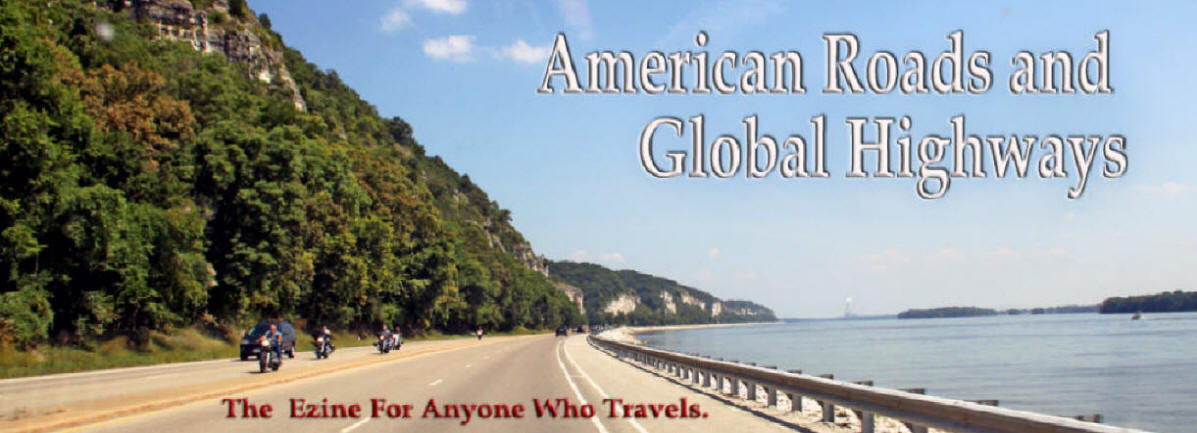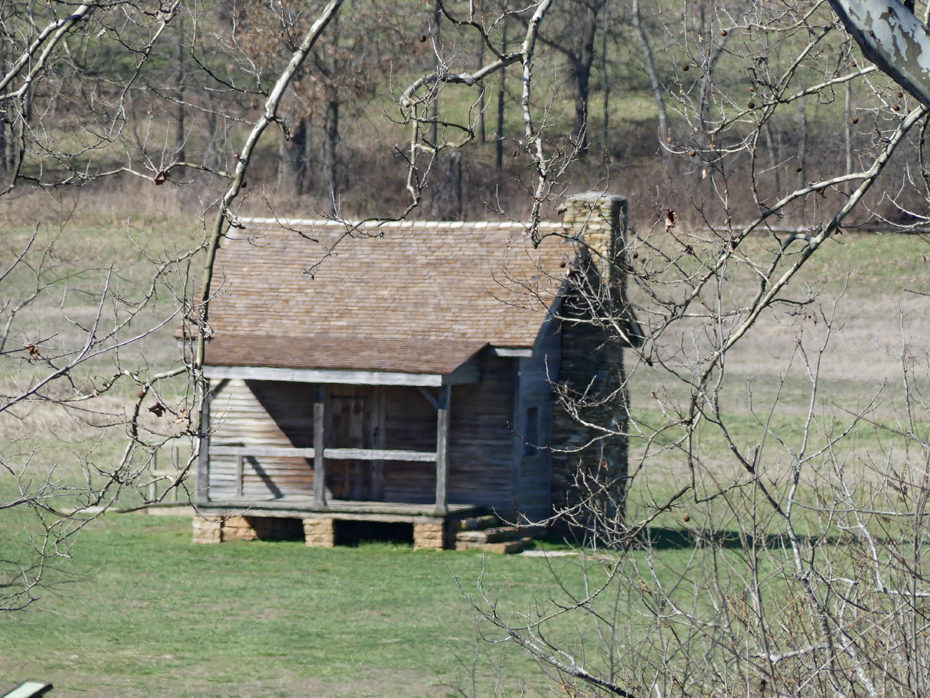
|
|
|
|
|
For me a visit to Wilson's Creek Battlefield was like dejà vu. I had never been there in real life but in my mind I spent many days there as I worked on my book, Under a Black Flag. For those not familiar with the Battle of Wilson's Creek, it was the first battle between the Union and Confederate forces in Missouri and the second battle of the Civil War. It was one of the most unusual battles fought during the Civil War as it involved three separate entities, Union forces under General Nathanial Lyons, Confederate forces under Brigadier General Ben McCullough and Major General Sterling Price commanding the Missouri State Guard. The reason for this, Missouri wanted to stay neutral. No way was that going to happen. When our bus pulled up at the Visitor's Center of Wilson's Creek National Battlefield, I felt my characters were by my side, pleased that I was finally visiting this place I had seen in my imagination so often. Since my books were so deeply involved in this place, I felt I needed to bring a little their story into this article. The background of my story is Dan and Becky had recently moved from Kansas when he realized pro-union raiders would never allow him to live in peace there because he was originally from the South. He didn't believe in slavery; in fact had freed his slave/half-brother, Andre, and they came to Kansas together. At the time of the Battle of Wilson's Creek, Dan had had to leave Andre in Kansas because he was now married to a runaway slave and could not safely go into a slave state like Missouri. To farther complicate the plot, Becky, Dan's wife, is an abolitionist from Massachusetts. How they ended up married is a story for a different book, Under a Bloody Flag.
Dan and Becky's
dream of peace was short-lived. On the morning of August
9th, before dawn they awoke to a pounding on the front
door. Dan hurried down to find an excited Cole Younger
on his porch. "Morning, Dan. I just got word; I've been
accepted into the militia. General Price is calling all
new recruits and any man wanting to defend the state
from the invaders to meet at Wilson's Creek. You are
coming, aren't you?" Our guide, Connie Langum, historian and acting curator, was a jewel. She not only explained the reasons why the battle was being fought but the main characters involved. In my book, my characters each had very different feelings about the battle. Of course, Dan was coming to the battle. As Connie pointed out, "Most of the young men in Missouri believed the war would be over in three months and they didn't want to miss it."
My characters reaction:
Becky could not
hide her tears. "We are being forced into the
Confederacy!"
Connie explained, "There is a difference in the Trans-Mississippi and the war in the east. It's just more personal and much more vicious here. It starts back in 1854 with the passage of the Kansas Nebraska Act and in some parts of Missouri it hasn't ended."
Connie hauled out treasures like a darrogotype in wonderful condition of some of the soldiers. This one showed four African American soldiers. Connie pointed out that "not only did the war divide the United States but it also divided the Five Civilized Tribes. Stand Waite is the most prominent Native American in the war. We have the flag that Stan Waite carried." The museum has records ranging from all the physical artifacts to items that tell the story like a diary by Albert C. Ellithorpe, the First Indian Home Guards. This battle drew in people of all races and many of the latter outlaws of the old west, like Frank James and Cole Younger, got their first taste of killing here. Connie pointed out that the majority of Native American units and all African American units had white commanders.
Frank
(James) surmised, "Governor Jackson is a Southerner at
heart. He tried for neutrality, but Lyon has forced him
into Jeff Davis's bed. You know what they say about
politics and strange bedfellows."
Cole
responded, "Father still sees hope of neutrality even
though it seems like we cannot be a part of Abe
Lincoln's United States." Connie brought out a fleam, used to bleed soldier who were already wounded. As she pointed out "Makes no sense in our world but in that day, it was thought you were sick because you had bad blood and the solution was to bleed you and get it rid of it." Another treasure there was a Union Flag that had been used at the battle. Then there was a Medal of Honor given to a Clay Woods for gallantry in battle. As Connie pointed out this was a very bloody battle. General Lyons was the first Union officer killed in the war. "In the six hour battle we had on this battle field we have 1100 killed, missing, or wounded on one side and 12000 on the other side." One of my own characters witnessed this. This is Dan's feeling during this battle. "Charge!"
The command snapped his mind back to the action on the
hill. It was his hill. His duty. He urged his tired body
forward, upward to the top of the hill. A strange
detachment so different from the earlier blood lust but
equally strange overtook him. He acted mechanically now.
He never considered that he should be afraid. But he
knew in some deep part of his soul he should be. Men
were down all around him. Occasionally, he leapt over a
downed body. Once, he tripped over one of his less
fortunate comrades. He found himself lying atop a young
soldier who could not have reached his twentieth
birthday. He pushed away in horror. The metallic smell
of fresh blood reached his nostrils. His hands felt wet,
and he stared at the blood covering his palms. The cloth
beneath the gaping hole in the soldier's jacket bore
prints of Dan's fingers as he scrambled to free himself
of the macabre embrace. He felt as if he should
apologize to the fallen soldier for disturbing his rest,
yet he saw that nothing would ever disturb this young
man again. He was far beyond that. Dan's stomach heaved
and threatened to discharge its contents. He wanted to
run away from this place of sudden death. He fought the
urge and tried to find that detached state he
experienced earlier. Detachment eluded him now. He felt
a part of this battle and would to do his duty, if for
no other reason than to avenge this young soldier's
senseless death.
The artillery behind him still rained death on those on
the crest of the hill while the guns on top continued to
return the barrage. To the west, he saw a Texas cavalry
band striving up the hill to destroy the hated guns. At
least they were on horseback. He watched a small figure
riding a gray horse among the cannons atop the hill
rallying the Federals. Lyon? Even as he realized the
identity of the man, the gray horse went down. Its rider
sprang off and strode forward. Dan watched as the figure
limped forward for a few steps before a final bullet
struck. The figure clutched his chest and went down. Dan
had no doubt he had watched the first general to die in
this bloody conflict. He
won't be the last.
The thought was unbidden and unwelcome, but he knew it
was true.
Besides the museum, the Visitor's Center has a small bookstore and the Hulston Library with of the largest Civil War book collections within the National Park Service. The Visitor's Center offers a short film about the battle and a map program which shows the movement of troops using fiber optic lights. If you are not familiar with the battle, theses are a must see. If you are traveling with youngsters, there is a Junior Ranger Program they will love.
When we left the Visitor's Center/Museum and drove out to our tour of the actual battlefield. For me the biggest draw here was the Ray Cabin. It was there in the thick of the battle and is the only remaining home left on the battlefield and one of only two remaining buildings; the other being the Ray Springhouse.
Dan and several of the others in his unit were put to
work hauling the injured down to John Ray's house which
had been requisitioned for a hospital. Mr. Ray had spent
the entire battle sitting on his front porch, but his
wife, Roxanna, and their children and a slave woman,
Mammy, huddled in the basement praying as the battle
raged almost on their doorstep. The dead and wounded
were scattered around the small house. The body of
General Lyon lay in one of the beds. Dan felt the bed
would have better served one of the wounded Confederates
or Missouri boys, but he was just a private so what did
he know? The tour road takes you over the now peaceful-looking creek, past the Ray House and Prices' Headquarters. Canons and signage are posted to keep you aware of what happened where. There are eight marked tour stops on the road. Starting with Gibson's Mill once located on Wilson's Creek, where remnants of the original trace and remains of the Gibson Home foundation are visible.
The Pulaski Light Battery from Little Rock, Arkansas was positioned on a ridge near Wilson's Creek during the battle and was the unit firing on Lyon's Federals as they advanced across Bloody Hill. This is where General Price had set up his camp next to the Edwards Cabin. That cabin is no longer there but the park service had placed a similar one from the same time period on the spot where it stood.
The tour road continues through other battlefield markers. Near stop seven there is small marker commemorating the spot where General Lyon fell. It's just a short walk along a trail leading past Bloody Hill. It's the only monument on the battlefield.
The last stop is on a spur of Bloody Hill and overlooks where the battle began and ended. Then you are back at the Visitor's Center. For more info: If you are interested in getting up close and personal with the characters in my books dealing with the Civil War mainly in Kansas and Missouri, information is here: http://katywalls.com/bloody-flag http://katywalls.com/black-flag
|
Connect with us on:
American Roads and | ||||||||||||||||
|
Public Disclosure--
Please Read I recently learned of a FTC law requiring web sites to let their readers know if any of the stories are "sponsored" or compensated. American Roads and Global Highways' feature writers are professional travel writers. As such we are frequently invited on press trips, also called fam trips. Most of the articles here are results of these trips. On these trips most of our lodging, dining, admissions fees and often plane fare are covered by the city or firm hosting the trip. It is an opportunity to visit places we might not otherwise be able to visit and bring you a great story. However, no one tells us what to write about those places. All opinions are 100% those of the author of that feature column. |
|||||||||||||||||
|
Privacy Policy/ Archives /
Contributors /
Subscribe to
American Roads Books by
Kathleen Walls /
Contact /
Sponsor or Advertise/ American Roads & Global Highways Home Page
|














